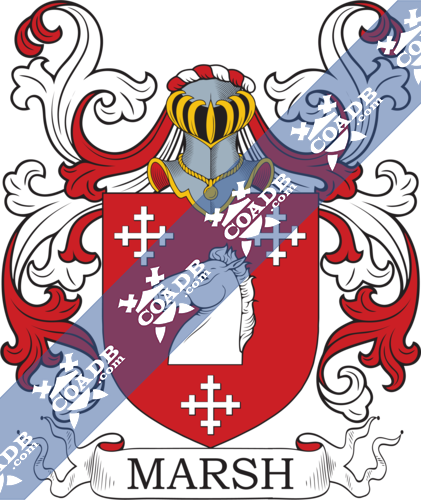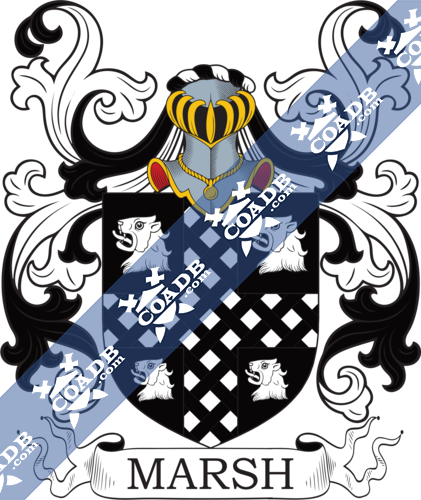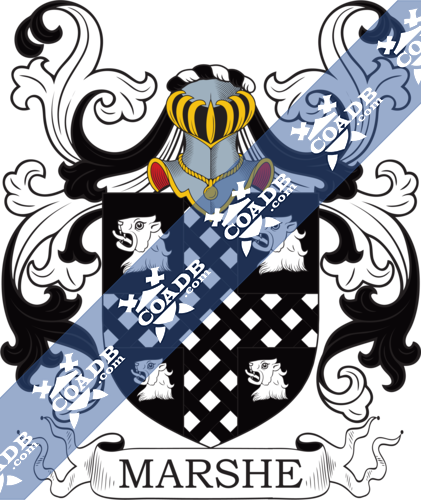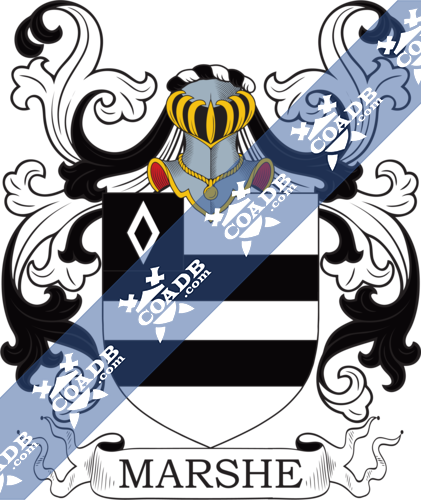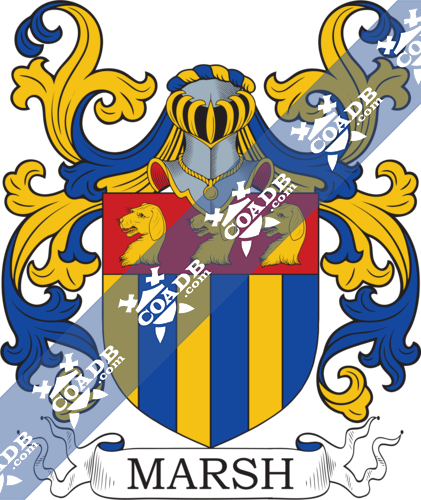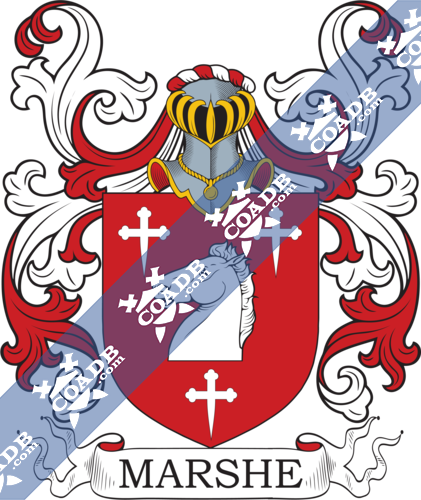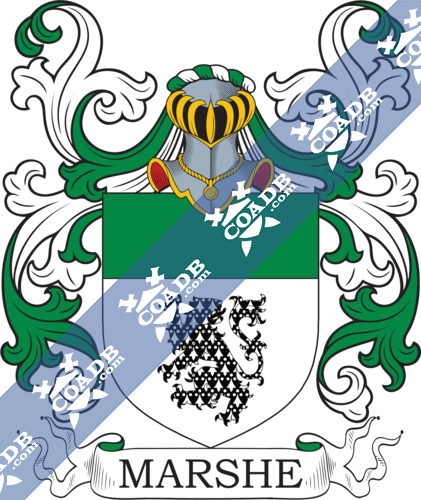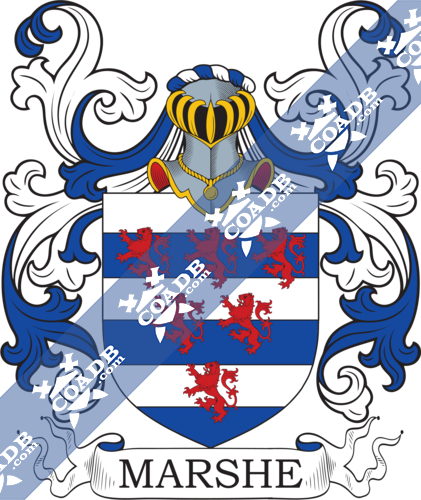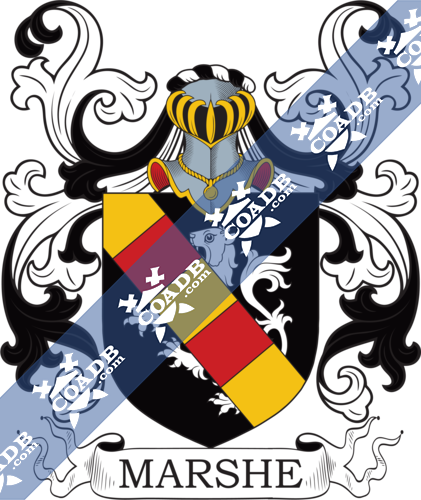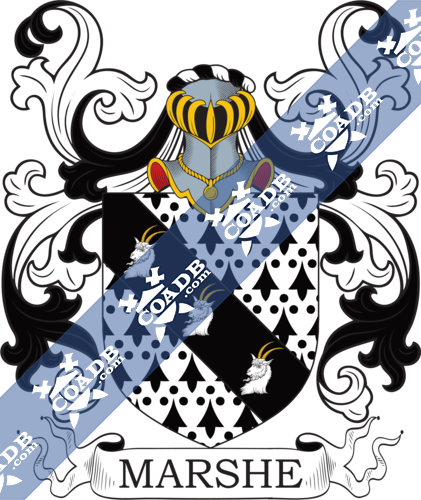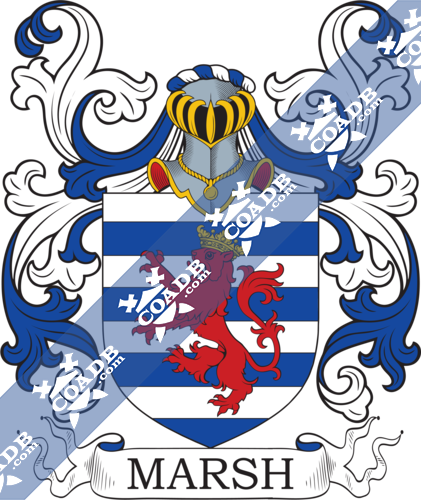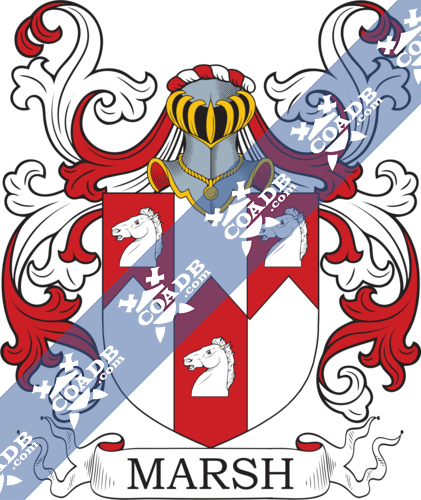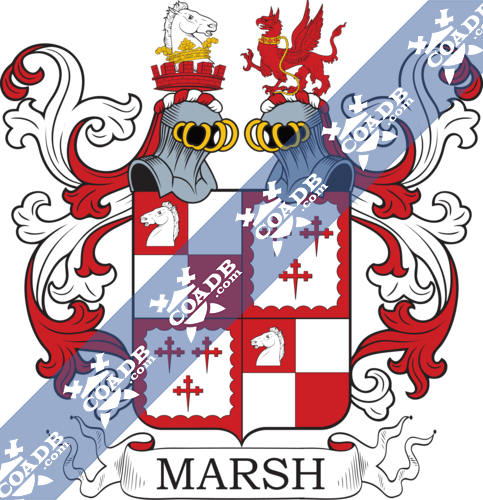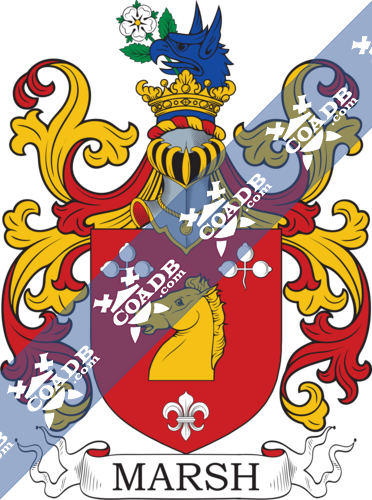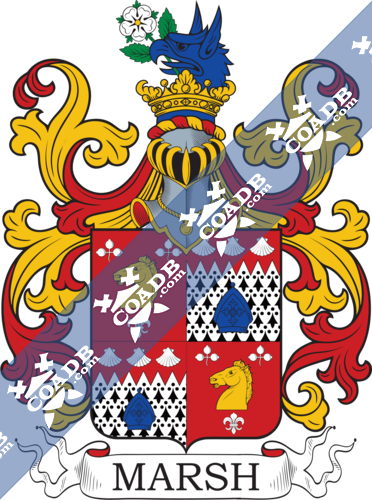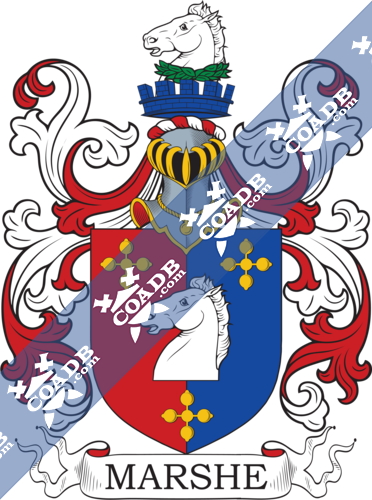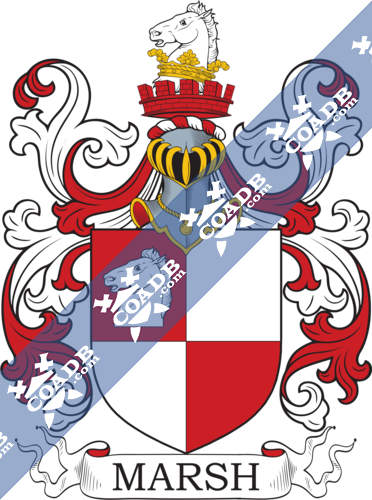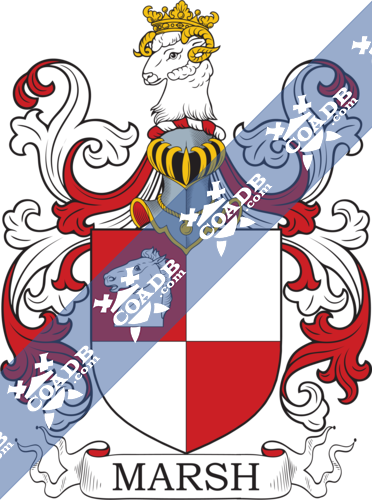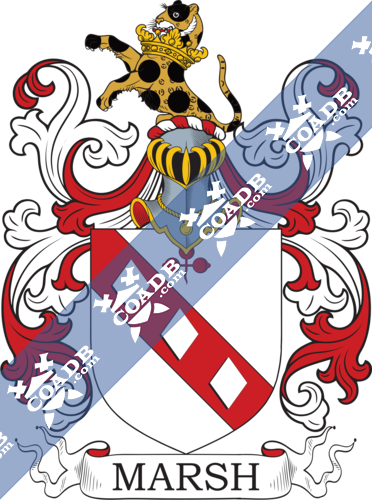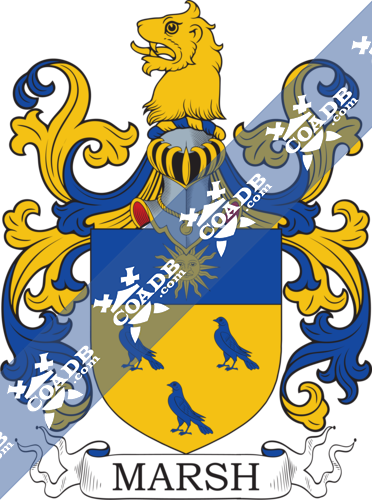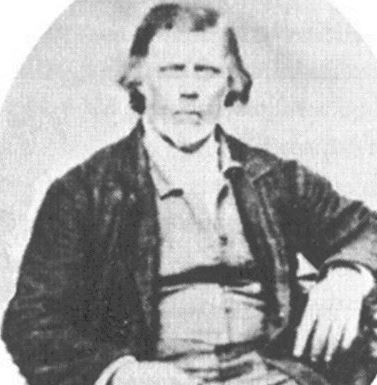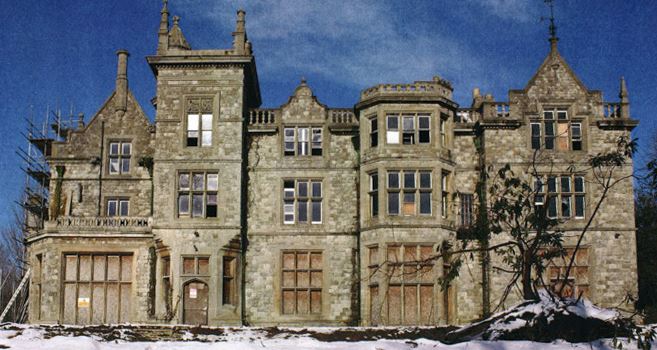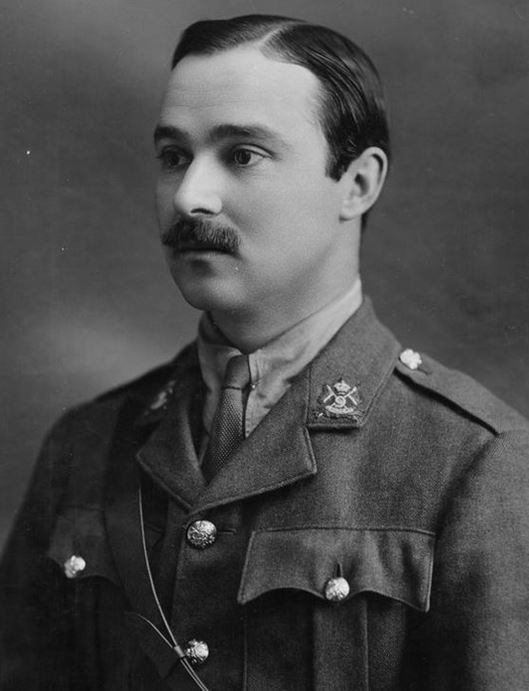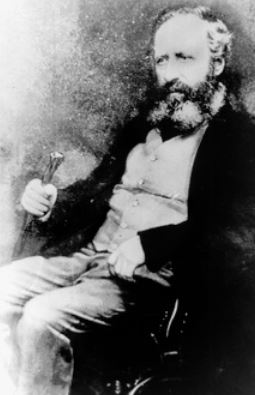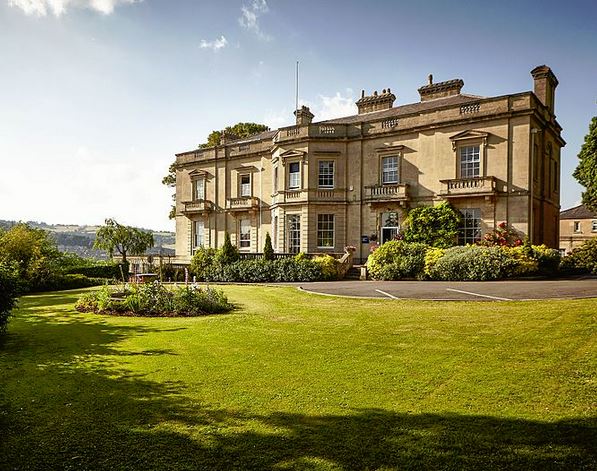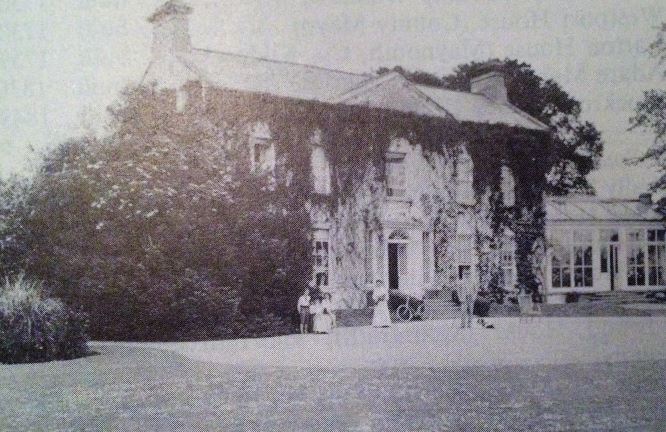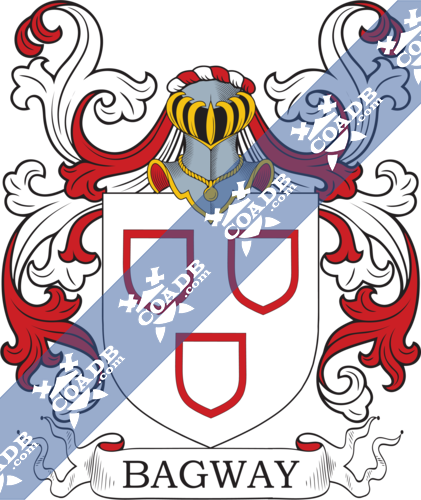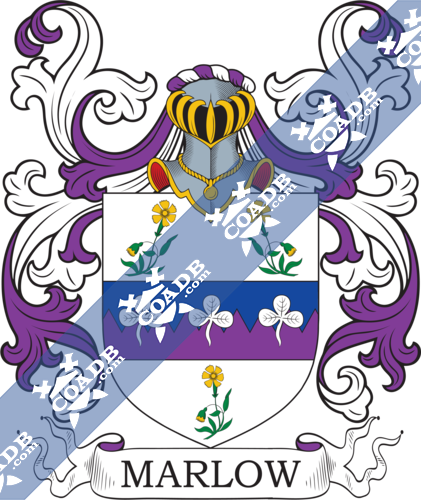Marsh Family Crest, Coat of Arms and Name History
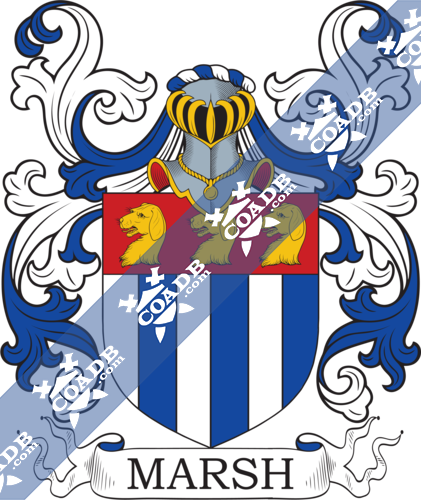
Marsh Coat of Arms Gallery
Don’t know which Coat of Arms is yours?
We can do a genealogical research. Find out the exact history of your family!
Learn More
Surname Name Meaning, Origin, and Etymology
This is a local surname meaning “at the marsh”, which was given to persons living near a marsh, which is a swamp or a bog. It derives from the Latin word mariscus and the Middle English word mersche. Another source notes that it comes it is a Teutonic name coming from the word maresche, morass, which is a fen, or a tract of low, wet land. There is a locale named Marsh in county Lancashire, as well as places in Buckingham and Lincoln counties. The Kentish family has been in that county since the 1300s AD. Another source notes there are places in Sussex and Shropshire with this name.
Regarding the geographic distribution of the surname, H.B. Guppy writes the following in his 1890 book Homes of Family Names: “Distributed over the greater part of England, but rare or absent north of Notts and Lancashire. It has several centres, namely, in Cambridgeshire and Kent in the east, in Lancashire in the north, in Shropshire in the west, and in Wilts, Dorset, and Somerset in the south. Marsh is the name of a parish both in Shropshire and Kent. Lower says that the surname has existed in Kent since the 14th century”.
Spelling Variations
Common spelling variants include Marshe and Marsch. The surname is also contained with several others names, including Hindmarsh, Saltmarshe, and Titmarsh. The surname Mash is a corruption of Marsh. The medieval form is Ate-Mershe. Marais is the equivalent last name if France.
Early Bearers of the Surname
The earliest known person to bear this surname was Godard le la Merse who was documented in the Pipe Rolls of Somerset in 1194 AD. Henry del Merse was recorded in the Curia Regis Rolls of Yorkshire in 1212 AD. The Hundred Rolls of 1273 AD, a census of Wales and England, known in Latin as Rotuli Hundredorum, documents three people bearing this surname: Isabel ate Mersche in county Oxfordshire, John in le Merse in county Oxfordshire, Richardus de Marsico in county Suffolk, and Brian de Marisco in county Wiltshire. A one Katerina del Mersch was recorded in the Poll Tax of Yorkshire in 1379 AD. Early marriages involving this surname include Elizabeth Marshe to Peter Foxe at St. Michael, Cornhill in 1567 AD, and Isabel Marsh to William Woods in London in 1567.
History, Genealogy, and Ancestry
The famous genealogist Bernard Burke’s book “Peerage and Knights” discusses three branches of this family. The first is Marsh of Gaynes Park. It begins with a mention of William Swain Chisenhale-Marsh, Esq. Gaynes Park, Essex who was born in 1857 and succeeded his father in 1857. Burke traces the lineage back to William Coxhead Marsh who was born in 1780 and High Sheriff in 1847. In 1806, he married mary, daughter of John Ingle, and had children with her: Thomas Coxhead, William, Reverend Augustus, Sophia (who married Edward Browne-Everard), Emily (who married Dr. Ainslie), Louisa (married Reverend William Pratt), Ellen Frances (who married Rev. C. Tower), and Caroline Georgiana (married Henry B. Edwards). He died in 1867 and was succeeded by his eldest son Thomas Coxhead Chisenhale Marsh who was born in 1811. In 1846, he married Eliza Ann Chisenhale, daughter of John Chisenhale of Arley Hall, and had issue with her: William Swaine (discussed above), Thomas Edward, Maria Sohpia, Caroline Emily, Blanche Ursula, Eliza Gertrude, Margaret Alice, and Anna Sophia. This family bore 1st and 4th, Marsh, quarterly gu. and arg., in the 1st quarter a horse’s head of the second; 2nd and 3rd, Chisenhale, arg., three crosses-crosslet botonnee fitchee within a bordure engrailed gules Crests—Issuing from a mural crown gules a horse’s head arg. ducally collared or, for Marsh; 2nd; a griffin passant gules collared and lined, the collar charged withthree crosses-crosslet, for Chisenhale.
The second family mention is Marsh of Ramsridge. It begins with a mention of Matthew Henry Marsh, Esq. of Ramridge in county Hants, J.P. and D.L, who was a Member of Parliament for Salisbury from 1857-68. He was also a member of the Legislative Council in New South Wales. He was born in 1810 and in 1844 he married Eliza Mary Anne, eldest daughter of Mr. Serjeant Merewether, of Castlefield in count Wiltshire whom he had three issue with: Georgiana Elizy Lucy, Bertha Maria, and Edith Anne. Burke traces the lineage back to Philemor Marsh, the son of Reverend Philemor Marsh, Rector of St. Martin’s and Vicar of Trinity. In 1768, he married a daughter of Matthew Hornsey and they left one son together”: the Reverend Matthew Marsh, Rector of Winterslow and Chancellor and Canon of Salisbury. In 1808, Matthew married Margaret, daughter of Peter Bellinger Brodie, and they left behind the following children: Matthew Henry (previously discussed), George Thomas (married Frances Elizabeth), Charles William (married Janet Macleod), and Georgiana Mary (married Reverend Thomas Prothero). The family held seat at Ramridge in Andover.
The third branch of this family Burke discusses is Marsh of Snave Manor and Ivy Church. It begins with a mention of Edward Marsh, Esq. of Snave Manor and Ivy, who was born in 1806. In 1927, he married Jane Inglis, the daughter of W. Forlong of Welshott House. They had five children together: Edward Newnham (born 1828 and Colonel in Her Majesty’s Indian Army), Henry Dyke (born 1836, Captain in the 82nd regiment), Adelaide Lydia, Mary Maria Pakenham (married Henry Preston Elrington in 1861), Agnes Roberta Jane, and Gertrude Tottenham (who married John Baylis Thomspon). Burke traces the lineage of this ancient family to a seat at East Langdom, near Dover, in Kent, during the reign of King Edward III of England in 1326 AD. William Marsh, of Marton, had two sons: Robert and John. John had two sons: Thomas and John. The elder was Thomas Marsh, of Brandred, and he was the father of Thomas Marsh. Thomas married Anne, daughter of John Nethersole, and he died in 1664 leaving an heir: John Marsh. In 1637, John married Anne, daughter and heir of Henry Saunders, of Canterbury, and with her had four daughters and five sons. The five sons were Henry, John, Richard (Captain), Saunders, and Thomas. Henry was the eldest son, who died in 1718 leaving one daughter (Lucy) and three sons. The third son, Henry, carried of the line, lived in London and was married twice. His second wife was Mary Stanford and they had two sons: Henry and John. This son Henry was a Captain in the Royal Navy and married Mary Tyler, and secondly Susan Atwick of Gosport. He died in 1772 at the age of 58 leaving a daughter (Mary), as well as sons William (Lieutenant in Royal Navy born 1757) and John. The eldest son, John Marsh, Esq. of Nethersole House, Barham Downs also of Snave Manor and Ivy Church, was born in 1752. He married Elizabeth, daughter of Henry Browne, Esq. of Sarum and he died leaving three sons: John, Henry Egerton, and Reverend Edward Gerard (born 1783, became Vicar Aylesford, Ken, and Canon of Southwell). He died in 1828 and was succeeded by his eldest son John Mary, born in 1775. He married Sophia, daughter of John Henry Pakenham, and had two sons: John Henry (born 1804) and Edward. He died in 1833 and was succeeded by his only surviving son, Edward (mentioned above). The arms/blazon of the family is: Quarterly, gules and argent, in the 1st quarter a horse’s head of the 2nd, with the crest: issuing from a moral crown gules a horse’s head argent ducally collared or.
The third branch Burke discusses is Marsh of Springmount. It begins with a discussion of Francis Marsh, Esq. of Springmount in Queen’s County, J.P. who was born in 1817. In 1838, he married Anne Maria, the daughter of Arhur Maxwell, and died in 1879 leaving eleven children: Jeremy Taylor (1841), Arthur (1844), Francis (1846), Henry (1850), Robert Maxwell (1852), Cecil Crampton (1856), George William (1858), Caroline Anne (1862), Anne Maria, and Elizabeth. Burke traces the lineage of this branch back to Francis Marsh, Esq. of Edgeworth in county Gloucester who married Anne, daughter of William Aylesbury. Their grandchild was Francis Marsh, who was born in 1629 and was Archbishop of Dublin. He married Mary, daughter and co-heir of Jeremy Taylor, and had children with her: Francis, Jeremy, and Barbara. The second son, the Reverend Jeremy Marsh, Dean of Kilmore, married Henrietta Catharine, who was daughter of Henry Dodwell. He secondly married Elizabeth Digby and had a daughter with her named Francis and a son named Jeremy. His son and heir was Jeremy, who married Jane, daughter of Patrick French, and had children with her: Francis, Robert (Rector of Killynan), Digby, Jeremy, Elizabeth (married Simon Digby of Osbertown), Frances (married Joshua Hearn), and Nichola (married Cecil Crampton). Francis, the eldest son, married Anne Vero, an heiress, and died in 1829 leaving two sons: Jeremy and Digby. The older son was the Reverend Jeremy Marsh, Rector of Ballintobber, who married Sarah Connell in 1815. They had two daughters (Anne and Sarah) and one son named Francis Marsh (discussed above). The blazon and arms of this family was Gules a horse’s head couped or, between two trefoils in chief and a fleur-de-lis in base argent, with the crest being a griffin’s head couped azure gorged with a ducal coronet or, in the beak a rose argent seeded or, slipped leaved and beaked vert.
Early American and New World Settlers
The book “Genealogical Guide to the Early Settlers of America” mentions fifteen people bearing this last name. The first is Alexander Marsh of Braintree who was a freeman in 1654 and married Mary, the daughter of Gregory Belcher, in 1655. He was a representative under the new charter and he died at age 70 in 1698. His will also mentions a wife named Bathsheba and he left numerous issue: John, Rachel, Phebe, and Ann (married Samuel French). His son John had a son who graduated from Harvard in 1726. The second is Daniel Marsh, son of John of Hadley, who married Hannah, widow of Samuel Crow and daughter of William Lewis of Farmington, in 1676. He was made a freeman and 1690 and died in 1725 at 72 years old. He had issue, the only recorded one being Joseph (minister of Braintree and graduate of Harvard). His grandchildren were Elisha (minister of Westminster) and Perez (a physician in Dalron). The third person mentioned is Ephraim Marsh, son of John of Salem, who signed a petition against imposts in 1668. The fourth person mentioned is George Marsh of Hingham, who came in 1635 and was a freeman in 1636. He married a woman named Elizabeth. He had children named Thomas, Oneisphorus, Elizabeth Turner, and Mary Paige. The fifth person is John Marsh, of Charlestown, in 1638 and died in 1666. He had a wife named Ann and a grandchild named Sarah Bicknor. He had son named Theophilus. The sixth person mentioned was John Marsh of Salem who had land grants in 1637 and came aboard the John and Mary in 1634. He had children named Zechary (1637), John (1639), Ruth (1641), Elizabeth (1646), Ezekiel (1648), Bethia (1650), Samuel (1652), Susanna (1654), Mary (1656), Jacob (1659), and daughter whose name was unrecorded. The seventh person mentioned is John Marsh of Hartford in 1636. He married Ann, the daughter of John Webster, and moved to Hadley in 1659. He had children named Joseph (1647), Joseph (1647), Joseph (1649), John, Samuel, Jonathan, Daniel, Hannah, and Grace. His wife died in 1662 and he married Hepzibah two years later, widow of Richard Lyman of Northampton and daughter of Thomas Ford. They had a child named Lydia. He died in 1688 and Grace got remarried to Timothy Baker. The eighth person is John Marsh of Hartford, the eldest of the previously discussed John, who married Sarah, daughter of Richard Lyman in 1666. He was a freeman in 1670 and he died in 1727. The ninth person mentioned is John Marsh of Boston in 1672. The tenth person discussed in the book is Jonathan Marsh in Milford in 1649. He was one of the first settlers in Norwalk in 1655. The tenth person is Jonathan Marsh of Hadley, brother of Daniel, married Dorcas, widow of Azariah Dickinson, in 1676. He was a minister in Windsor and freeman in 1690. He was a representative in 1701 and died in 1730 at the age of 80. The eleventh person was Onesiphorus Marsh of Hingham, son of George, who married Hannah Cutter in 1655. They left issue: Onesiphorus (1655) and Hannah (1657). The twelfth person is Samuel Marsh of New Haven born in 1648. He had children: Samuel (1650), Comfort (1652), Hannah (1655), and Elizabeth (1657). The thirteenth person mentioned is Samuel Marsh of Hatfield, brother of Daniel, who married Mary Allison in 1667. He was a freeman in 1690 and was a representative in 1705. He died in 1728 leaving several children. The fourteenth person mentioned is Thomas Marsh of Hingham, son of George, born in England. In 1649, he married Sarah, daughter of John Beal, and died in 1658 laving issue: Thomas, Sarah, Ephraim, Mary, and John. The last person mentioned is Zechary Marsh who was son of John of Salem, was a freeman in 1680.
Henry Marsh Danuel, born in 1865, was the eldest son of Daniel J. Marsh who was born in 1837 in Springfield and Harriet Gay. He was a member of city government and he married Edith S. Hall in 1903. They had two children together: John Atherton (1897) and Elizabeth (1904). He bore the following arms/blazon: Gules, a horse’s head couped between three crosses crosslet fitchee argent. His father Daniel was the son of Michael (1790-1847), who was the son of John (1753-1817), who was the son of Captain Hezekiah (1720-1791), who was the son of Captain John (1668-1744), who was the son of John (1643-1727), who was the son of John (1618-1688).
A one Jane Marsh left the port of London to Virginia in 1635 AD aboard the Plaine Joan. A William Marsh went to St. Christopher aboard the Mathew in May of 1635. Joseph Marsh went to Virginia aboard the Primose in 1635. Francis Mursh also came in the Primrose, and his name was also likely spelled Marsh. Edward Marsh was recorded on list of convicted rebels sent to the Barbados in the seventeenth century.
Other early settlers included Margaret Marsh (Maryland 1648) and Henry Marsh (Boston, 1712).
Mottoes
The Swan family motto is 1) De marisco, meaning “From the (Marsh) bulrush”, 2) Nolo servile capistrum, meaning “I am unwilling (to bear) the slavish halter”, 3) Mars denique victor est, meaning “War is the ultimate Victor”, and 4) Nil desperandum, meaning “Never despair”.
Grantees
Later people bearing this surname that bore the arms: 1) (a testatrix), of Britwell House, Bucks., [1862] and 2) Lieut.-Col. John William, Solicitor, East India Board, 1886.
Notables
Famous people with this last name include: 1) Adam Marsh (1200-1259 AD) who was an English scholar, theologian, and Franciscan from Bath, England, 2) Herbert Marsh (1757-1839) who was a bishop in the church of England and Bishop of Llandaff, 3) Narcissus Marsh (1638-1713) who was an English clergyman from Wiltshire, and 4) Thomas Baldwin Marsh (1800-1866) was an early leader in the Church of Latter Day Saints.

